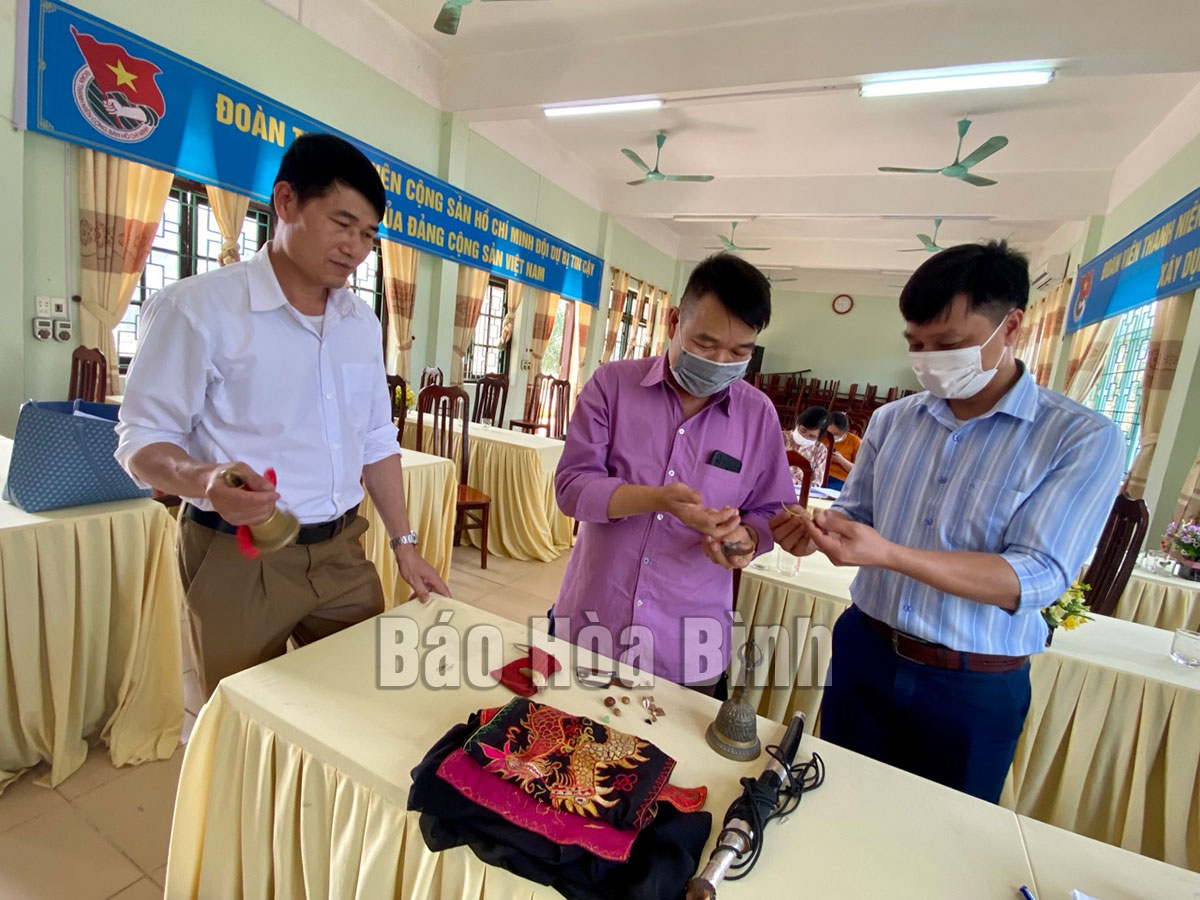
(HBO) – A survey in northern Hoa Binh province, conducted by the Committee for Ethnic Minority Affairs under the provincial People's Council in quarter I, 2022 has revealed the region is home to 786 intangible cultural heritage elements.
Two elements, in particular, have been recognized as national intangible
cultural heritages, namely Mo Muong and Muong gong cultures of the region.

Conducting survey
of Mo Muong heritage.
The survey showed that five types of traditional
arts in Hoa Binh are falling out of practice, leaving them on verge of
oblivion. The Committee for Ethnic Minority Affairs under
the provincial People's Council stated the provincial People's Committee direct
the Department of Culture, Sports and Tourism to coordinate research, advise
and submit a draft resolution to the Provincial People's Council on the
preserving the culture of ethnic minorities in the province. The plan should
focus on preserving the language and writing for the next generation, it said.
The Department of Culture, Sports and Tourism stated
it would coordinate with the Committee for Ethnic Minority Affairs to implement
the project "Preserving and promoting traditional values of ethnic
minorities and tourism development". At the same time, it suggested to open
training courses on preserving culture for cadres and civil servants at all
levels and village elders in the community./.
With an increasingly vibrant and widespread emulation movement aimed at building cultured residential areas and cultured families, Yen Thuy District has been making steady progress toward improving both the material and spiritual well-being of its people, while fostering a civilized, prosperous, beautiful, and progressive community.
Once lacking recreational spaces and community facilities, Residential Group 2 in Quynh Lam Ward (Hoa Binh City) has recently received attention for the construction of a new, spacious, and fully equipped cultural house. The project followed the model of state support combined with public contributions in both labor and funding.
The "All people unite to build cultural life" movement, which has been effectively integrated with Kim Boi district’s socio-economic development goals, is fostering a lively spirit of emulation across local residential areas, hamlets, villages, public agencies, and enterprises. In addition, through the initiative, traditional cultural values are being preserved and promoted, while community solidarity and mutual support in poverty reduction and economic development are being strengthened.
A working delegation of the Hoa Binh provincial People’s Committee led by its Permanent Vice Chairman Nguyen Van Toan on June 11 inspected the progress of a project to build the Mo Muong Cultural Heritage Conservation Space linked to tourism services in Hop Phong commune, Cao Phong district.
Born and growing in the heroic land of Muong Dong, Dinh Thi Kieu Dung, a resident in Bo town of Kim Boi district, in her childhood was nurtured by the sweet lullabies of her grandmother and mother. These melodies deeply imprinted on her soul, becoming an inseparable part of her love for her ethnic group's culture. For over 20 years, this love for her hometown has driven Dung to research, collect, and pass down the cultural values of the Muong people to future generations.
In the final days of May, the Ethnic Art Troupe of Hoa Binh Province organized performances to serve the people in remote, mountainous, and particularly disadvantaged areas within the province. These were not just ordinary artistic shows, but they were the meaningful journeys aimed at spreading cultural values, enhancing the spiritual life of the people and contributing to the preservation of ethnic minority cultural identities.



